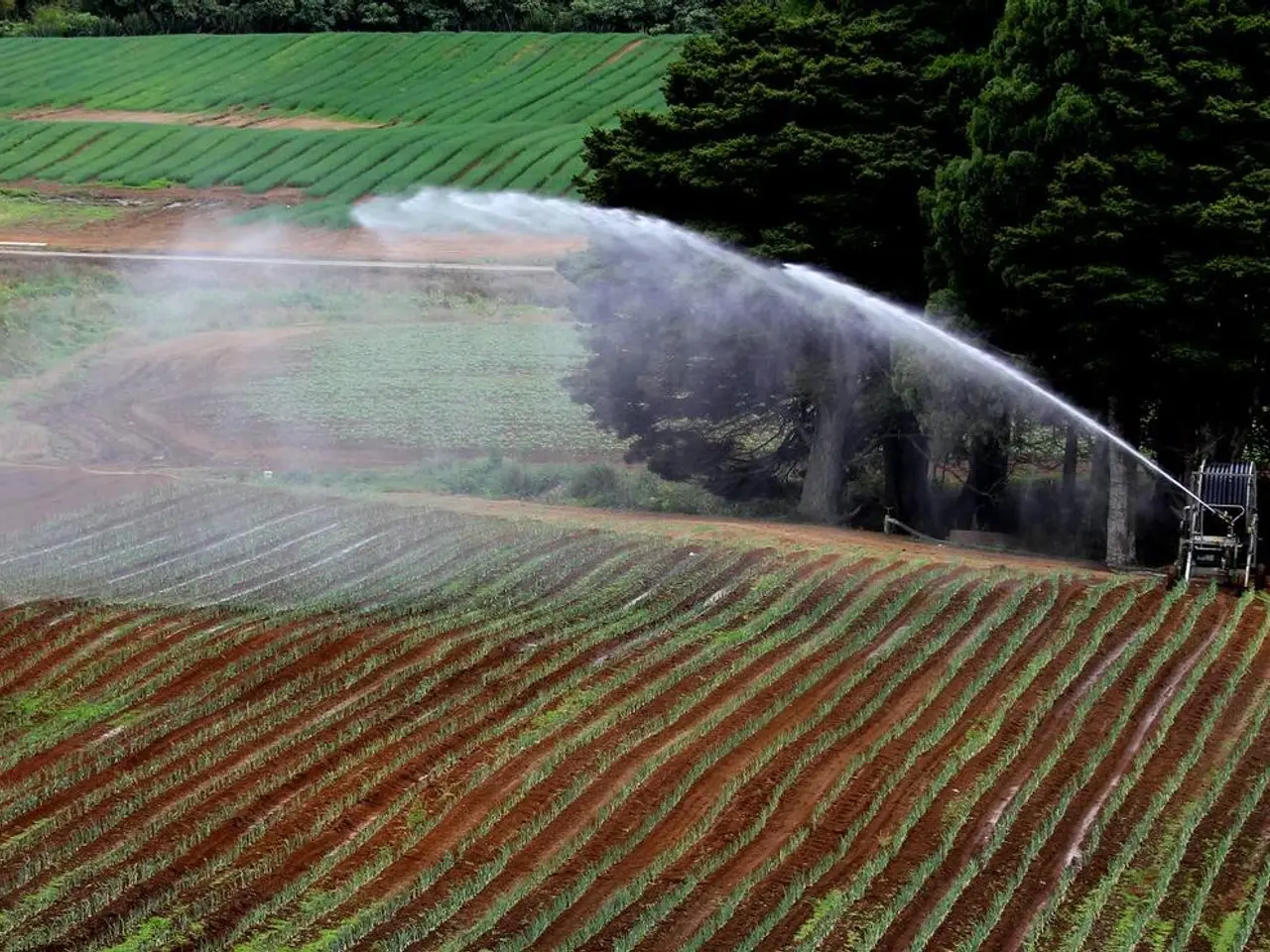Unveiling the Strategies of Farmers for Enriching Soil Nutrients
In the pursuit of sustainable agriculture, farmers are adopting a variety of innovative practices to improve soil health, increase productivity, and reduce environmental impact. This article explores some of the most effective strategies for soil nutrient restoration, focusing on crop rotation, cover cropping, no-till farming, biochar application, and soil microbe management.
Crop Rotation
Crop rotation involves alternating crops seasonally, often including nitrogen-fixing plants such as legumes (e.g., beans, peas, clover). This practice naturally replenishes soil nitrogen, breaks pest and disease cycles, and enhances nutrient cycling. For instance, alternating nitrogen-fixing legumes with cereals can restore nitrogen and improve soil structure [1][2].
Cover Cropping
During off-seasons, cover crops like clover, vetch, or rye are grown to protect soil from erosion, fix nitrogen (if legumes), increase soil organic matter, suppress weeds, and foster biodiversity [2]. Over a period of five years, cover crops can boost soil organic matter by up to 15% [2].
No-Till Farming
No-till farming minimizes soil disturbance by eliminating or reducing plowing, preserving soil structure and organic layers, reducing erosion, and enhancing microbial activity. Combining no-till with crop rotation and cover crops conserves topsoil and improves long-term soil productivity [2][3].
Biochar Application
Biochar, derived from biomass, improves soil fertility by increasing water retention, enhancing nutrient availability, and promoting beneficial microbial communities. Studies show that rice straw biochar combined with legume cover crops and mineral fertilizers can boost soil microbial biomass and crop yields [4].
Soil Microbe Management
Focusing on promoting beneficial microbial communities is crucial for nutrient cycling (e.g., nitrogen fixation, phosphorus mobilization). Practices such as organic mulching, adding biochar, and planting leguminous cover crops regulate microbial populations, stabilize soil ecosystems, and enhance nutrient availability [4].
These strategies, when used together, form an integrated approach that builds ecological balance, maintains resilient farm ecosystems amid environmental changes, and supports sustainable food production [1][2][3][4]. Specific crop examples include legumes like clover, peas, and vetch for nitrogen fixation, and cereals or vegetables in rotation to maximize nutrient use and break pest cycles [1][2].
Modern technology, such as satellite data and AI, can optimize these practices for precision nutrient and water management, further improving efficiency and sustainability [1][3].
Additional Practices
- Conservation tillage reduces the frequency and intensity of tilling, improving soil health, reducing erosion, and decreasing the chance of nutrients reaching waterways through runoff.
- Crop rotation diversification can improve soil health, reduce input costs, and increase profitability.
- Cover crops, such as rye, wheat, oats, clovers, and legumes, can improve water infiltration into the soil and act as natural fertilizers.
- No-till farming can lead to improved soil health, reduced erosion, climate change mitigation, cost savings, and increased crop yields.
- Managing soil microbes can be done through adding beneficial microbes, suppressing harmful microbes, and implementing crop management practices like tillage, crop rotation, cover cropping, and adding compost.
- Cover crops help improve water infiltration, increase organic matter, and enhance the overall health and productivity of soil.
- Field buffers, which consist of trees, shrubs, and grasses along the edges of fields, can help prevent nutrient loss by absorbing or filtering out excess nutrients.
- Drip irrigation is a highly efficient water delivery system that minimizes evaporation and conserves soil nutrients.
By embracing these practices, farmers can lead to better yields, profits, and a more sustainable future for agriculture.
Science-Based Health-and-Wellness
The strategies for soil nutrient restoration, such as crop rotation, cover cropping, no-till farming, biochar application, and soil microbe management, are rooted in scientific findings and can be considered part of a health-and-wellness routine for the soil, promoting a balanced ecosystem and long-term sustainability.
Fitness-and-Exercise for Soil
Just as regular fitness and exercise help maintain the health and wellness of the human body, the consistent implementation of these soil management practices fosters soil resilience and increases its capacity for nutrient cycling, providing the foundation for healthy crop growth and sustainable food production.




